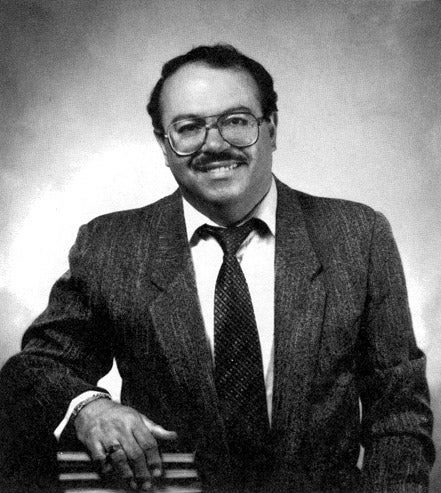How APM turned growing pains into gains

It is hard to imagine what Eastern North Philadelphia would look like today without Jesus Sierra, the city worker who in 1970 founded Asociación Puertorriqueños en Marcha and built it into one of the premier social service providers and non-profit developers in the city.
It was Sierra’s artful navigation of the city’s dangerous political waters that helped APM secure funding and amass clout. It was Sierra’s vision that drove APM to expand into the world of community redevelopment, a decision that has remade the physical landscape of Eastern North Philadelphia. And it was Sierra, with his quiet charisma, who gave APM its identity and personality.
Over the past several months, PlanPhilly has published a series of reports, this the last edition, on the Asociación Puertorriqueños en Marcha and its role in Eastern North Philadelphia’s revival.
Among other topics, the stories covered the politics and racial dynamics of urban recovery, the design and architecture of low-income developments, and the massive investment of taxpayer funds that enabled the neighborhood’s transformation.
The writing, video and photography that comprise this series was made possible by a grant from the William Penn Foundation.
For more than three decades, Sierra and APM were more or less synonymous.
Eventually, though, that became the problem.
In 2004, after a protracted debate that upended APM and the community it serves, the organization’s board of directors forced Sierra to resign. He died two years later.
The separation was painful and shockingly ugly. Board members feared for their safety. Tires were slashed, and threats of physical violence were made.
But the organization survived. Six years later, it seems clear that, as difficult as it was, the ordeal was necessary for APM’s long-term success, and thus a critical moment in the redevelopment of Eastern North Philadelphia.
When the original vision falters
In non-profit circles, there’s a phrase used to describe organizations that have become inextricably bound up with the man or woman who created them: “founder’s syndrome.”
In a typical case, founder’s syndrome begins with a well-intentioned leader who sees a community need and creates an organization to meet that need.
Sometimes, when the leader is capable and charismatic, like Sierra, the non-profit grows quickly. The staff swells. Funding pours in from a variety of sources. The organization’s mission becomes more complicated.
All too often, the organization struggles to adapt to these changes. The skills required to build a grassroots organization from scratch, after all, are not the same as those needed to manage a big, complex non-profit day in and day out.
By 2004, after nearly 35 years of Sierra’s leadership. APM had contracted an acute case of founder’s syndrome, former board members said.
“When an agency has founder’s syndrome, it lives and dies with its founder. That wasn’t the vision we had for APM. We wanted it to continue to grow,” said former APM chairman Carlos Rodriguez, who led the board during its rancorous parting with Sierra.
After decades of effective leadership, Sierra, in the board’s view, had lost his direction.
APM’s staff had become heavily populated by Sierra’s friends and family members, including his wife, his daughter and several siblings. The books were a mess, former APM chairman Rodriguez said, making it impossible to document how grant money was being used, or even if it was all being spent in an above board manner.
Sierra confidantes contacted for this story, including his daughter Marta Sierra (a senior executive at APM when her father ran the agency), would not comment on Sierra’s departure or how well APM was being run before he left.
But it is clear that the problems were severe enough that APM’s funders – the government agencies and non-profits that made APM programs possible – became gravely concerned. They began warning the board that funding would dry up, fast, if the situation wasn’t fixed.
“There was pressure coming from the funders. They said changes needed to be made. Dr. Sierra was accustomed to doing things his way, and apparently the funders wanted more openness,” said Eliud Lopez, vice chair of the APM board when Sierra left the organization.
But it wasn’t just the funders.
“We knew there needed to be a change, even without the pressure from the funders. We knew it,” said Lopez.
An ugly turn
The board gingerly broached the notion of retirement with Sierra. Though he seemed open to the idea at first, Sierra began to resist stepping down when the board became more insistent, Rodriguez said.
Tensions mounted between Sierra and the board until, at one meeting, Rodriguez said, Sierra attempted to take control of the board by unilaterally naming three “intimidating” community members to the board, in violation of agency policy.
A pushing and shoving match broke out between the new (if unofficial) board members and the old ones, until eventually the police were called in, and the three interlopers were ejected, Rodriguez said.
It got worse from there. While Sierra and the board wrangled over bylaws and debated who had the authority to fire who, individual board members were victimized by vandalism, and some feared so much for their safety that they would not walk around the neighborhood without an escort.
“He fought back the way he knew how,” Lopez said of Sierra, and his tough tactics.
Eventually, the board succeeded in ousting Sierra, though the founder and his family later sued APM and secured a non-disclosed settlement.
Even now, former board members, APM employees and community members alike are reluctant to revisit those days in any detail, at least not on the record.
“It was a very difficult time. The staff was split. The community was uneasy. We did it because we felt we had no choice,” Rodriguez said.
Despite the rancor surrounding Sierra’s parting, APM has publicly honored his work in the years since, most recently at the organization’s 40th anniversary gala last November, where he was featured in a video commemorating APM’s history. When his image popped up on the screen, the crowd cheered.
Cleaning up the mess
A review of APM’s record of achievement in the post-Sierra years makes it difficult to conclude that the board was wrong to seek a new leader. It was a year after Sierra was forced out that the board found that new leader in Nilda Ruiz, a former APM manager who had gone on to an executive position with the National Council of La Raza in Washington D.C., the nation’s largest Hispanic advocacy organization.
When she returned to APM, Ruiz found that the organization had failed to keep up with changing times. The organization was years behind on technology. The staff was large, but many of the workers were low-skilled and poorly paid. A few made just $5 an hour, she said.
And the organization’s financial condition was dire, Ruiz said. APM had maxed out it’s $500,000 line of credit, and funders had cut their grants to the agency during its leadership crisis. Internal financial documents were worthless, Ruiz said.
“A lot of civil rights organizers start out with an approach that is right for the times, but they don’t change with the times. Sometimes the founders just don’t know when to let go,” Ruiz said.
For her first few years, Ruiz focused on the basics. She hired a competent CFO, shed staff and improved pay and benefits for the workers she retained. Money-losing programs were eliminated. A modern computer network was put in place, and the organizational chart was redrawn.
“I knew that I had to really fix the infrastructure. make sure the organization was fundamentally strong again before we started to build,” Ruiz said.
The fixes Ruiz made amounted to the professionalization of APM. She put in place basic accountability systems and processes. As simple as it sounds, it’s an evolution that many grassroots organizations are never able to achieve, and one that APM only managed after a bruising internal struggle.
“When we were in the middle of the situation, many of us thought about quitting. We figured, ‘we don’t need this, we’re not getting paid for this,’ but we stuck with it,” said Lopez, the former APM vice chairman.
“When I look back on it now, I realize it was a sacrifice we made to serve the community. It wasn’t about us. It wasn’t about Dr. Sierra. It was about the community and what was best for them.”
Contact the reporter at pkerkstra@planphilly.com
WHYY is your source for fact-based, in-depth journalism and information. As a nonprofit organization, we rely on financial support from readers like you. Please give today.



